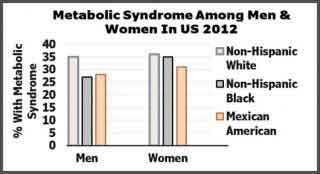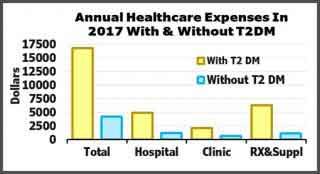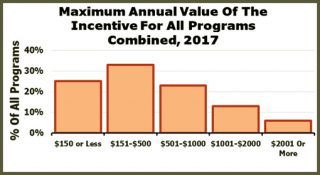Telehealth Reverse Diabetes Using Financial Incentives | Free Trial In Texas

Diabetes costs more and affects more people than any other chronic disease. About 10% of our population spends 25% of our healthcare dollars.
This includes $237 billion in direct medical costs for diagnosed diabetes and $90 billion in reduced productivity.
One third of people going to work every day have Metabolic Disease including Diabetes. Are you in this group? We can help you out!
To learn more about programs Herd Healthcare offers, our website is:
www.herdhealthcare.com
Epidemic Of Metabolic Syndrome
The combination of insulin resistance, abdominal obesity, high blood pressure and abnormal fat metabolism occurs in 30% of adults in this country.
Compared to all others, those adults have twice as much cardiovascular disease, stroke, arthritis, chronic kidney disease, schizophrenia, dementia and several types of cancer.
 As shown in the Figure, Caucasian men and women have more metabolic disease than either Hispanic or African-American men and women.
As shown in the Figure, Caucasian men and women have more metabolic disease than either Hispanic or African-American men and women.
Also, over two-thirds of US adults are either overweight or obese. More than 10% of people over 60 years of age and 50% over 80 years have low muscle mass.
These physical features are preventable. The costs of poor health, disability and premature death can be avoided.
What can we do? Each of us must look after ourselves.
What can we do to improve health, wealth and happiness of everybody else? We can promote programs to reduce poor health and save money doing it.
Productivity Costs And Medical Expenses
In the past, the guiding principle for workplace health programs was keep everybody happy. Serious illness was not much considered. Heart attack and stroke could happen but that would be sometime in the future. By then, the worker will be employed somewhere else!
Not so! Now we know that workers with Metabolic Disorders including Diabetes have huge medical expenses and miss more days at work. They have more than twice as many missed days at work because of illness or injury as workers without cardiometabolic risk factors.
Workers with Metabolic Disorders had medical costs more than 50% higher than other workers. Most of the increase was spent on treatment of diabetes.
 Healthcare costs for people with Type 2 Diabetes amount to about 25% of all healthcare costs. More than half of that spent because of diabetes. The Figure shows that people with diabetes have medical expenditures about 2.3 times higher than in the absence of diabetes.
Healthcare costs for people with Type 2 Diabetes amount to about 25% of all healthcare costs. More than half of that spent because of diabetes. The Figure shows that people with diabetes have medical expenditures about 2.3 times higher than in the absence of diabetes.
Indirect costs related to diabetes include increased absenteeism ($3.3 billion) and reduced productivity while at work ($26.9 billion).
All these reports show that most costs for illness and injury come from 30% of employees with Metabolic Disorders including Diabetes.
Costs of Employee Healthcare are close to $15,000 for every employee. For most  employers, labor costs are the greatest operating expense. As a result, costs of employee healthcare amount to almost 10% of operating expenses.
employers, labor costs are the greatest operating expense. As a result, costs of employee healthcare amount to almost 10% of operating expenses.
Out Of Pocket Expenses for employees are costs that aren’t reimbursed by the employer, insurance or reinsurance company. They include deductibles, copays and coinsurance for covered services up to any limit for out of pocket expenses in an insurance plan. Average healthcare deductible through an employer plan is about $1,500 for individual coverage. Average copay insurance is about 20%.
Small Firms with over 50 full time employees pay at least 60% of premiums for healthcare insurance coverage. Large corporations pay closer to 80% of premiums for their employees.
About 10% of workers do not have any healthcare insurance. They are part-time employed, working for small business with fewer than 50 full-time employees or unemployed. They pay out of pocket for all their healthcare services.
Health And Wellness Incentive Programs
A Majority of Corporations with more than 50 employees offer Health and Wellness Programs. Most of them use incentives to promote program participation. Incentives include gift cards, merchandise, cash, contributions to health savings accounts and lowering of healthcare insurance fees.
Only about one-third of smaller corporations with fewer than 100 employees offered Health and Wellness Programs. This means that about 20% of all employees in the American workforce do not have access to H&W Programs.
 The annual $ value of program incentives is actually quite small. As shown in the Figure, half of all programs in 2017 offered less than $500 and only about 20% offered as much as $1,000. However, incentives did bring about 20% higher participation rates.
The annual $ value of program incentives is actually quite small. As shown in the Figure, half of all programs in 2017 offered less than $500 and only about 20% offered as much as $1,000. However, incentives did bring about 20% higher participation rates.
Incentives, generally speaking, were not used to promote outcomes. The only exceptions were a few programs which charged smokers larger fees for healthcare insurance.
Weight and Physical Fitness Impact of incentives is small. An analysis of published clinical trials using financial incentives has been reported.
Results from 11 clinical trials produced data showing improvements in physical activity and weight loss. These trials included 126 subjects receiving on the average a maximum total possible payout per week of $28 (range $8 to $77).
The effect on physical activity was an average increase in total daily steps from about 5,000 steps per day to 7,000 steps per day.
The effect on weight loss was an average loss of -5.2 lb.
Results reported do not include any information about how many subjects produced most of the changes.
It’s possible that a maximum payout of $4 per day simply is not enough to produce much improvement except in a very small percentage of subjects.
Summary
Most costs for illness and injury come from 30% of employees with Metabolic Disorders including Diabetes. The 10% with Type 2 Diabetes have by far and away the most costly illness presenting in the American workforce. In addition, other family members with type 2 diabetes also increase the cost of providing healthcare insurance for employees and their families.
 Health and Wellness Programs reduce both corporate expenses and out of pocket expenses for employees. Managing %Body Fat and increasing Physical Activity improves long term prospects for good health and relief for individuals with Metabolic Disorders including Diabetes.
Health and Wellness Programs reduce both corporate expenses and out of pocket expenses for employees. Managing %Body Fat and increasing Physical Activity improves long term prospects for good health and relief for individuals with Metabolic Disorders including Diabetes.
Enthusiastic corporate support including financial incentives for employee participation makes it possible for employees to accept help reversing their diabetes. Measures specifically designed to target employees with diabetes would make them uncomfortable and probably would be illegal. As part of a corporate culture promoting health and wellness, employees suffering effects and costs of diabetes would be more likely to come out of the shadows of poor health.
Once identified and recruited to participate, improvement in health and performance should follow. Intensive efforts including substantial financial incentives to make that happen would be good investments.
Success would relieve those employees and their employers from direct and indirect cost of Metabolic Disorders including Type 2 Diabetes.
Let us help you build, promote and implement a Corporate Health and Wellness Program to improve employee performance and reduce healthcare costs.
 We are pleased to share our blog articles with you, and we are always interested to hear from our readers. Our website address is: www.herdhealthcare.com
We are pleased to share our blog articles with you, and we are always interested to hear from our readers. Our website address is: www.herdhealthcare.com




